The Sugar Beet Harvest in the Red River Valley is in full swing. The harvest finally started on October 7, seven days late (see my previous post about the delay). Since the harvest started, Jim has worked 14 or 15 hours a day for the past 8 days. He gets up at 9:30 a.m, has a hearty breakfast, and is out the door at 10:45 a.m. He works a long day hauling sugar beets, then comes home and crawls into bed at 3:00 a.m. Fast forward to 9:30 a.m. the next morning and he does it all over again.
Today was an exception, he has a day off. The weather has turned warmer, so American Crystal Sugar shut down the harvest for the day. Warm weather means warm beets which means rotting beets. So the beets have to stay in the ground until the air temperature gets colder. It is rest time for Jim!
I haven’t been out to see the actual harvest yet, but hope to the next time they are working. Jim, however, has taken some pictures and hours and hours of video with our dashcam. The video will have to wait until we are home and have a big screen to deal with it. But I can certainly show you the pictures of what he has been up to.
The time slot the grower, Sproule Farms, was given by American Crystal Sugar (the co-op that farmers own shares in and runs the plant) is 1 p.m. to 1 a.m. Their first truck can enter the plant at 1:00 p.m. So that means the truck drivers (i.e. Jim) need to show up at the shop at 11:00 a.m. in order to get their trucks cleaned and gassed up. Then there is the 35 mile drive south to the field.
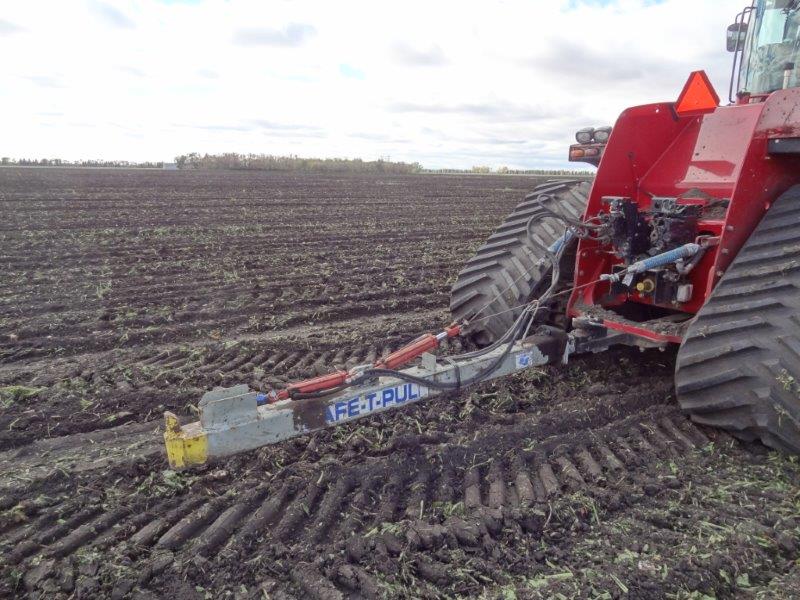
This is the hook on the back of the tractor. It goes into the loop on the truck to pull it when stuck.
Once the equipment is all at the field, the first task is to take the top off the beets. The piece of equipment that does that is called a defoliator, also known as a Roto-beater. It goes down the rows first and cuts the tops off the beets.
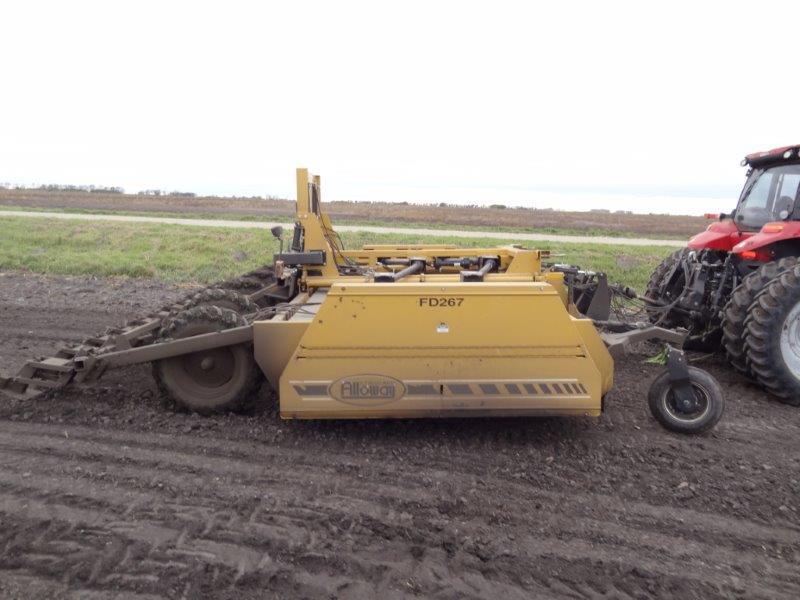
Roto-beeter. Apparently a skunk got caught in one the other night. Jim said all that was left of the skunk was the smell. Ewwww.
Once the tops have been removed, the lifter comes along and lifts the beets out of the ground. The beets have the dirt knocked off of them and they moved up the conveyor. The truck drivers drive their semi-trucks alongside the tractor/lifter and the conveyor deposits the beets into the truck.
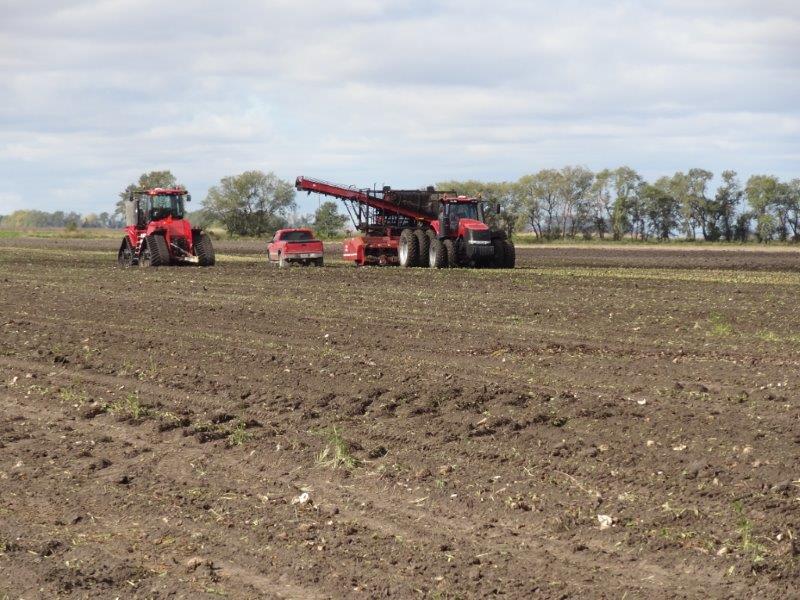
The beet lifter is on the right. It “lifts” the beets out of the ground after the tops have been removed.
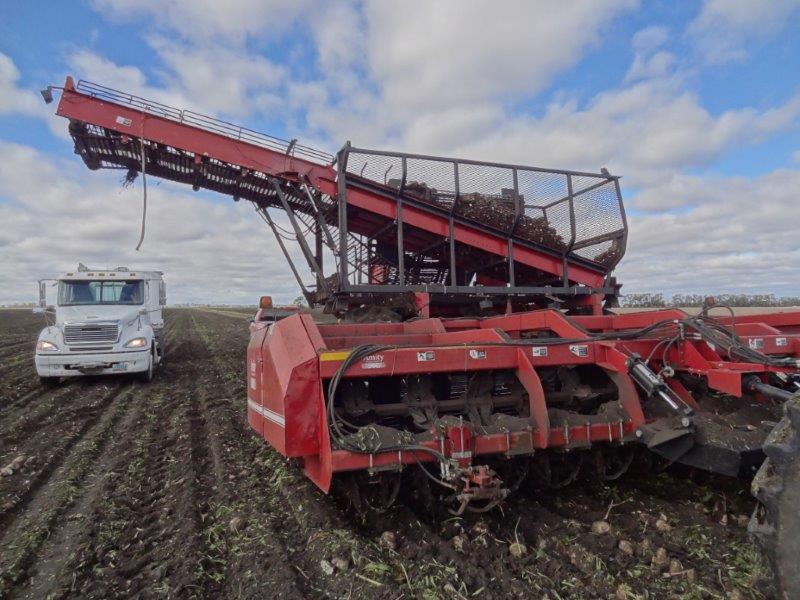
This truck is about to move into position to receive beets from the beet lifter. You can see the beets without their tops in front of the lifter.
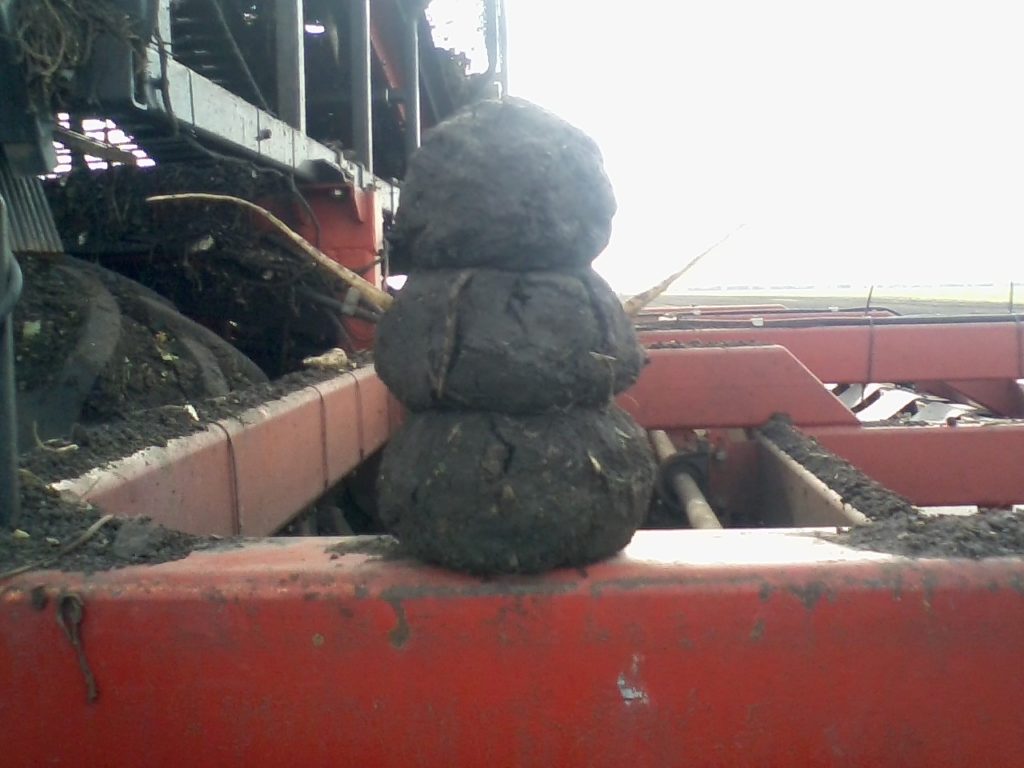
The beet lifter removes the excess dirt from the beets. If the dirt is muddy, it will form into balls inside the lifter. One of the workers made a Mud-Man from the dirt balls the lifter created!
Of course, breakdowns happen. They have a large maintenance truck in the field to do any needed repairs. And it was needed. More than once.
Once the semi-truck is full of sugar beets, it’s off to the processing plant (where they are turned into white table sugar) or one of the piling stations (a location where the beets are piled to be processed later).
The plant is a chaotic place, with full trucks coming in and empty trucks leaving.
What happens at the plant is a tad confusing unless you have worked there. To give a very simple explanation (there are many steps I’m leaving out…mostly because I don’t have a handle on all of them)….. When a full truck arrives, it is weighed, so the grower gets credit for the amount of beets they are bring in. Sometimes a temperature probe is put into a beet on the truck to make sure the beet is not too warm or cold. Then the truck is released to a piling station. The truck dumps its load, the piler runs the beets up to the top of the pile via a conveyor. Then it’s back to the field for the truck to get another load of beets. Jim averages around 13 trips during a 12 hour period.
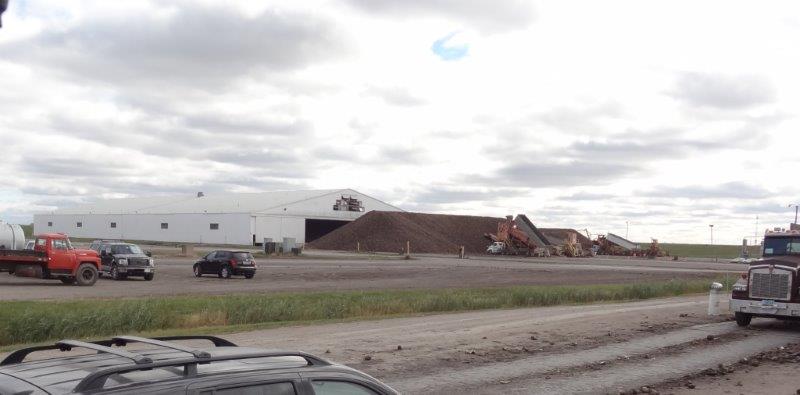
The processing plant. Notice the ever growing pile of beets in front of the storage shed. This shed was already full of beets, so they are now piling them outside.
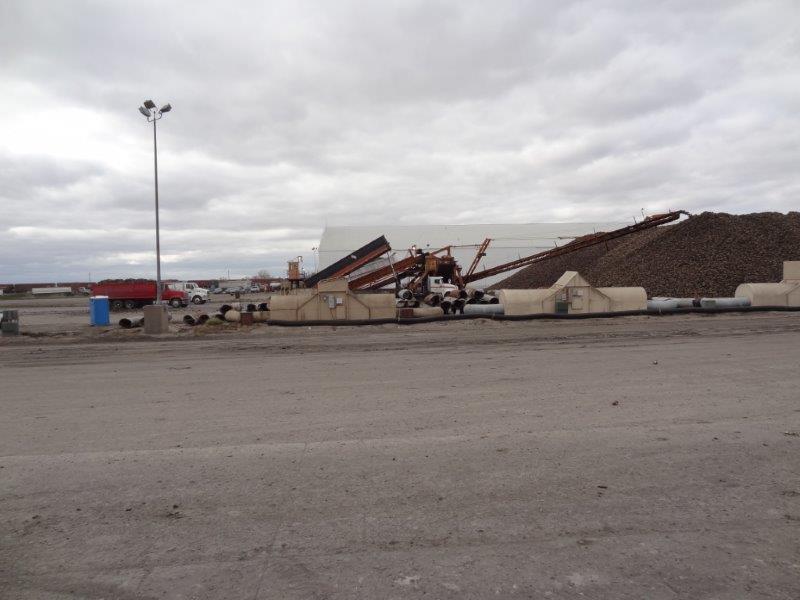
A piling station. The piles are long and narrow. The piling equipment in this picture moves to the left of the picture as the beet piles grows. Jim said this pile was 1/4 of a mile long.
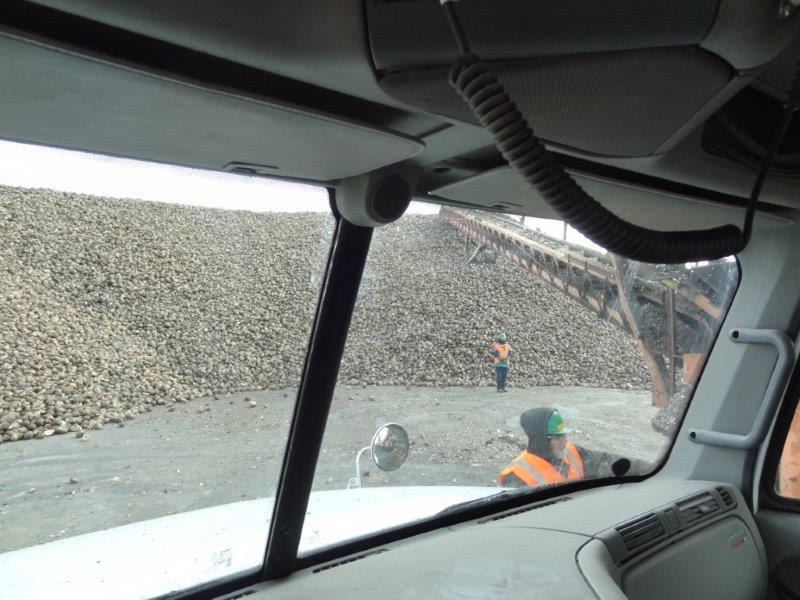
The beet pile as seen from the truck. You can see the conveyor at the right dumping offloaded beets onto the top of the pile.
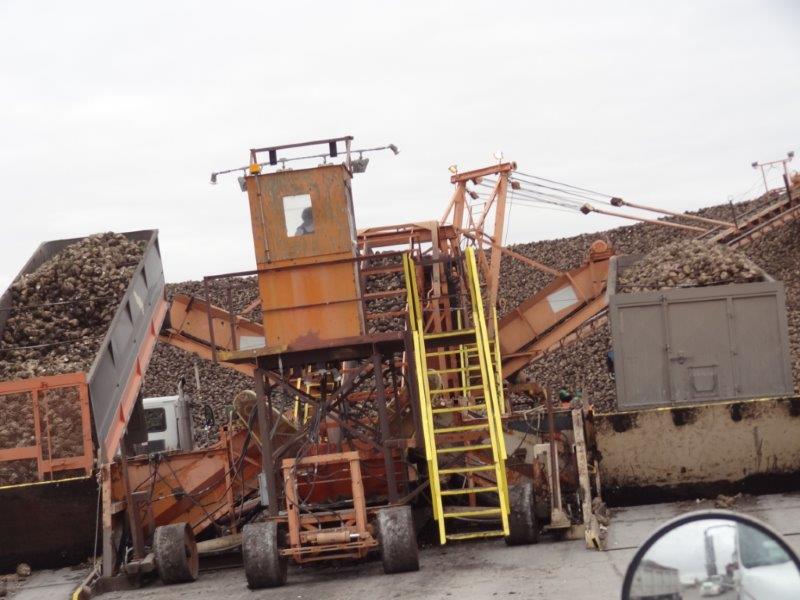
Trucks dumping their loads into the piler hopper. The conveyor arm of the piler swings back and forth as delivers beets to make the pile wider.
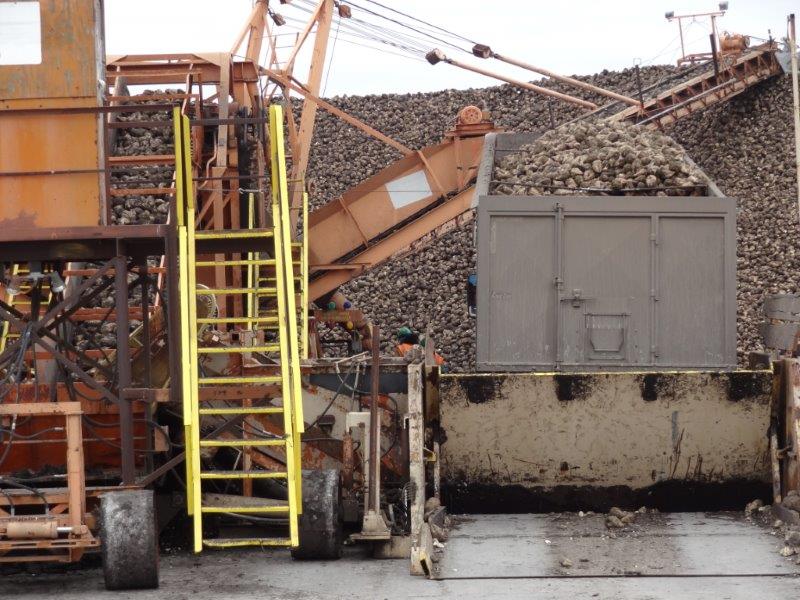
Dumping it’s load at the piler hopper. Once the hopper is empty, the truck has to make a tight turn next to the beet pile to get out of the piler area.
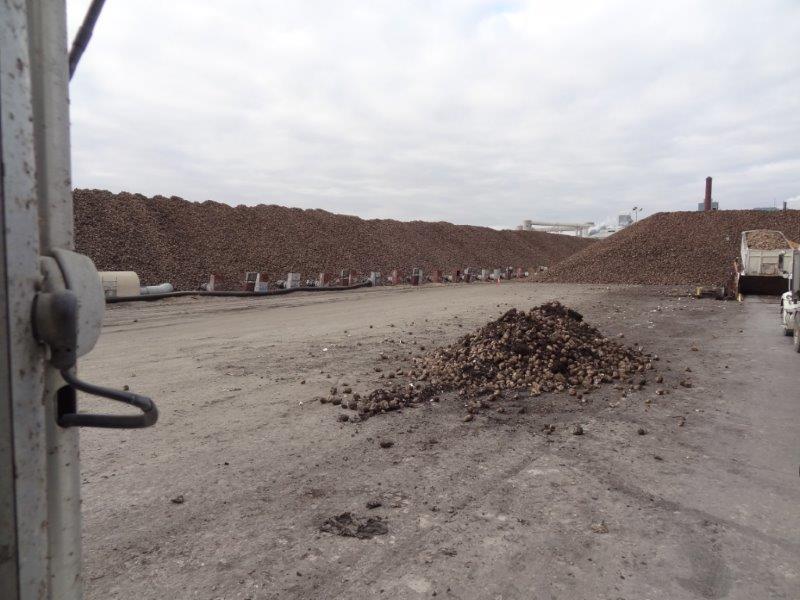
In the foreground are some of the beets that didn’t make it into the hopper. A bobcat will scoop them up and get rid of them. In the background is a row of beets. It’s approximately 100 feet wide and at this point was 1/4 of a mile long.
That gives you somewhat of an idea of what Jim has been doing the past eight days. To quote Dennis. Jim’s cousin who grew up him, “You can take the boy off the farm but you can’t take the farm out of the boy.” It’s true!
UPDATE: Jim’s phone just rang, American Crystal Sugar is opening back up at 11:00 tonight . So he’s to clock in at 9:30 p.m. and the grower got permission to send their first truck across the scales at the piling station a few hours early. They are hoping to finish up the field tonight.
UPDATE 2: Sproule Farms called…now he is not to report until 6:00 tomorrow morning!!!!
What is next? Corn! Sproule Farms asked Jim to help with the corn harvest when the beets were done. He agreed. Surprise…NOT! Fortunately, that work goes on during the day, so it’s more of a normal schedule. However, Wednesday will definitely be Jim’s last day working. On Thursday we take off for eastern Minnesota and Wisconsin to see family.
As for me, I’ve been keeping plenty busy. I brushed the cobwebs off my programming skills and tackled a database problem for Callie. I caught up on my normal work. And my sewing machine hasn’t been put away since we arrived. I’ve stayed plenty busy. By the time we leave the Red River Valley, we will have spent 3 weeks in one spot. That’s a new record!
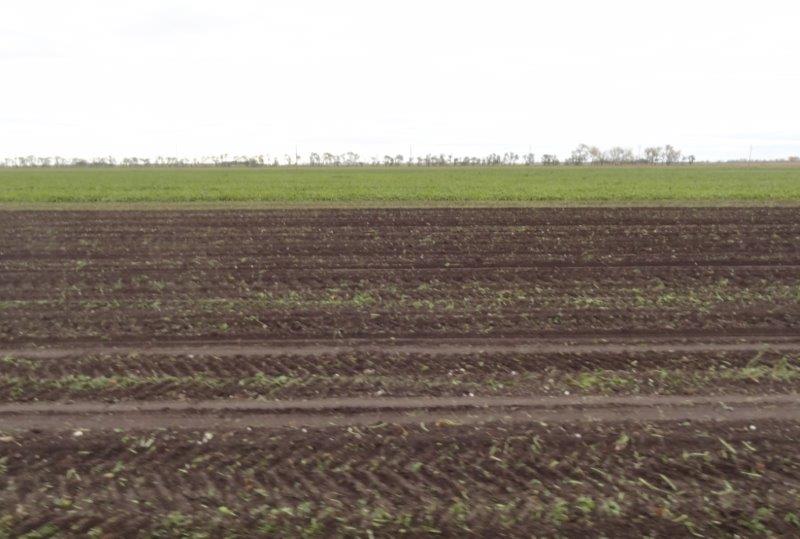
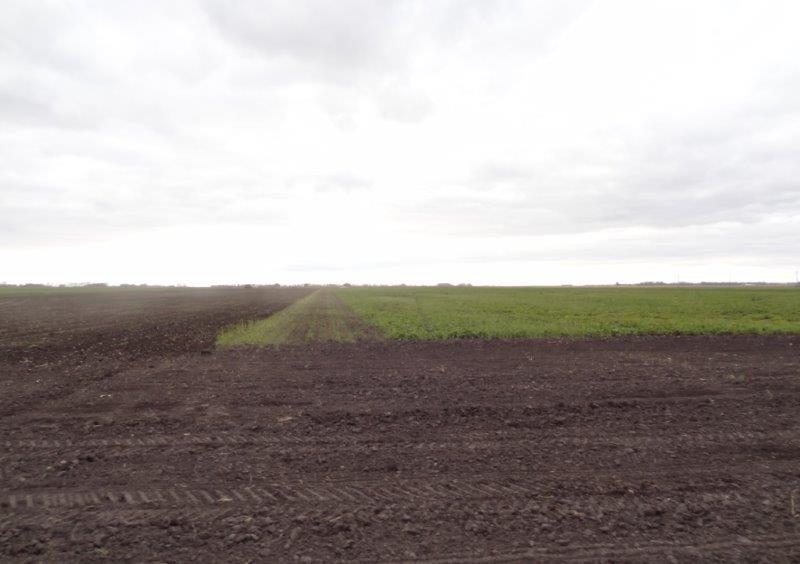
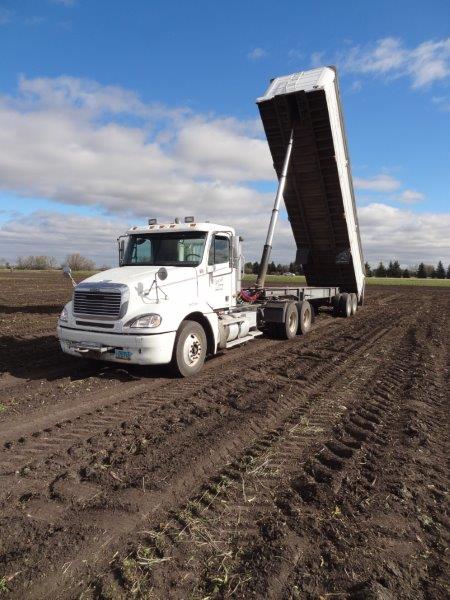
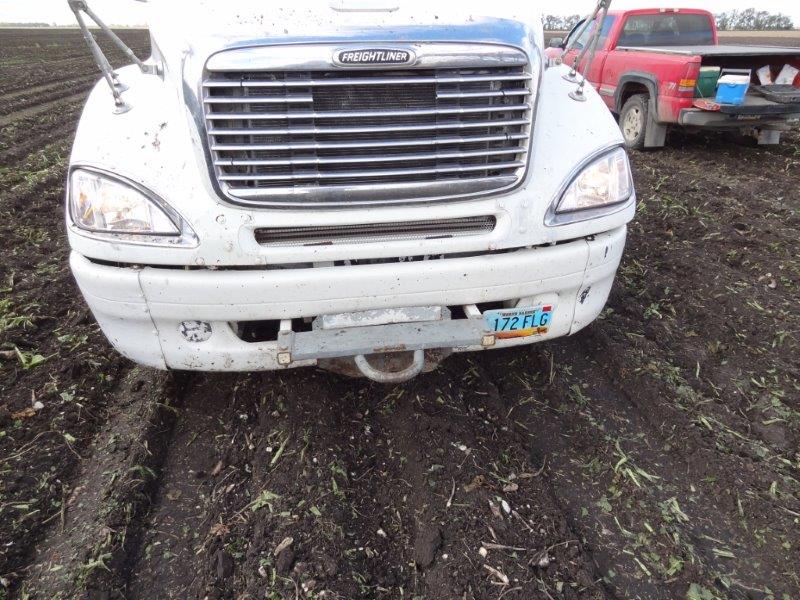
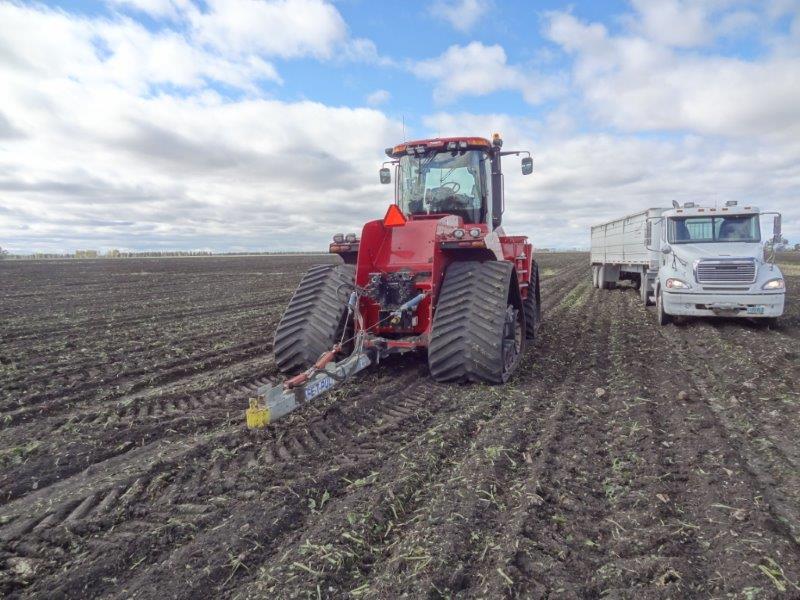
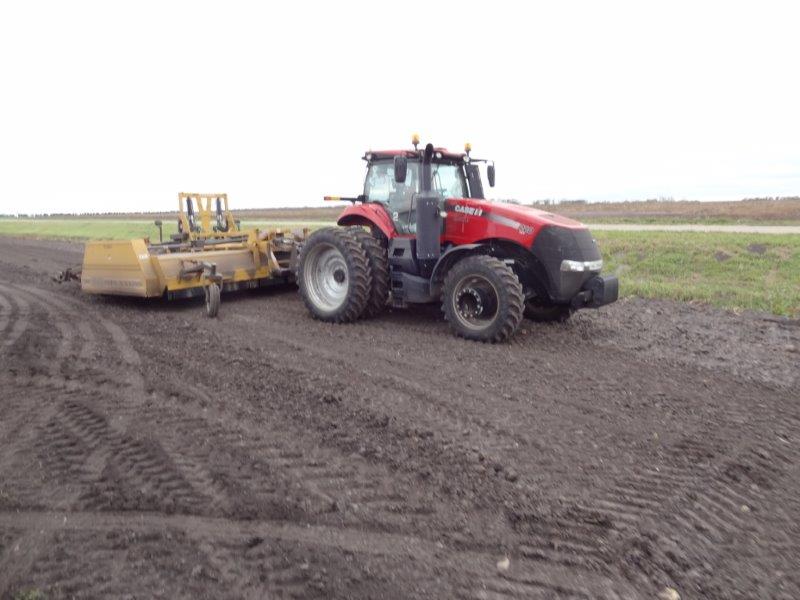
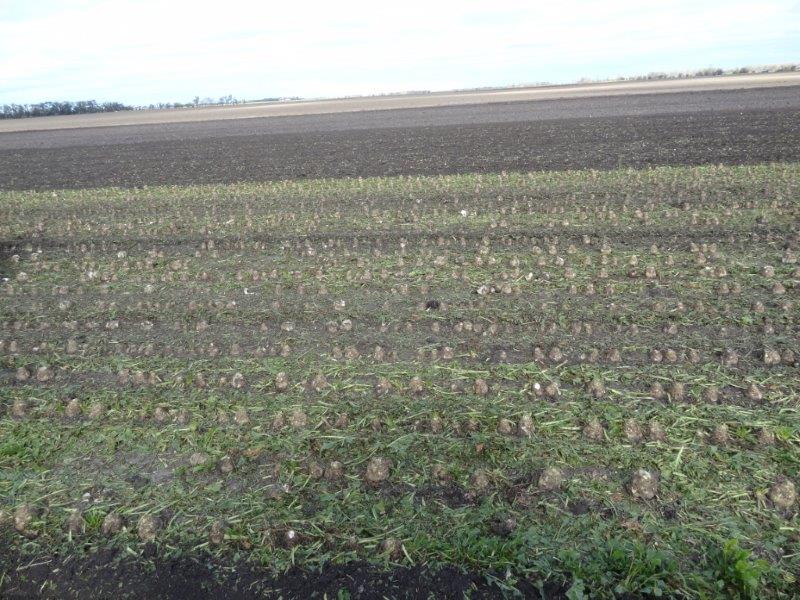
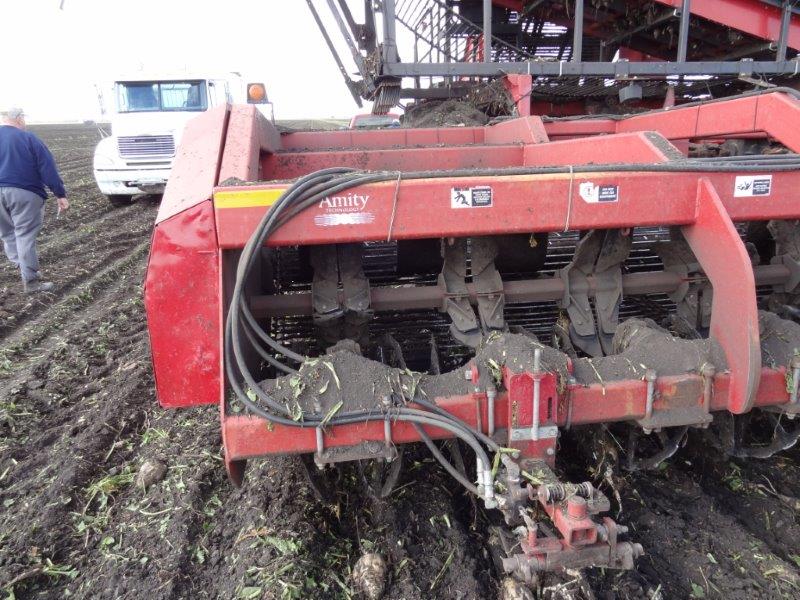
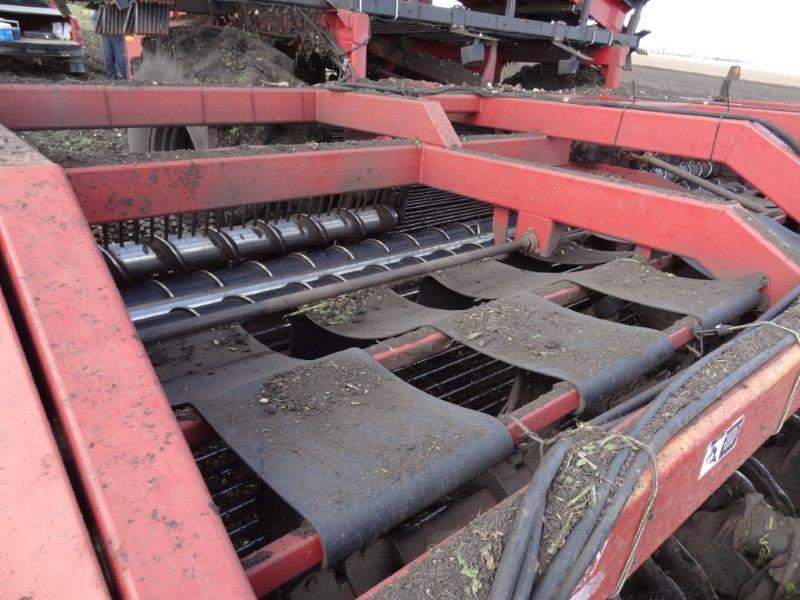
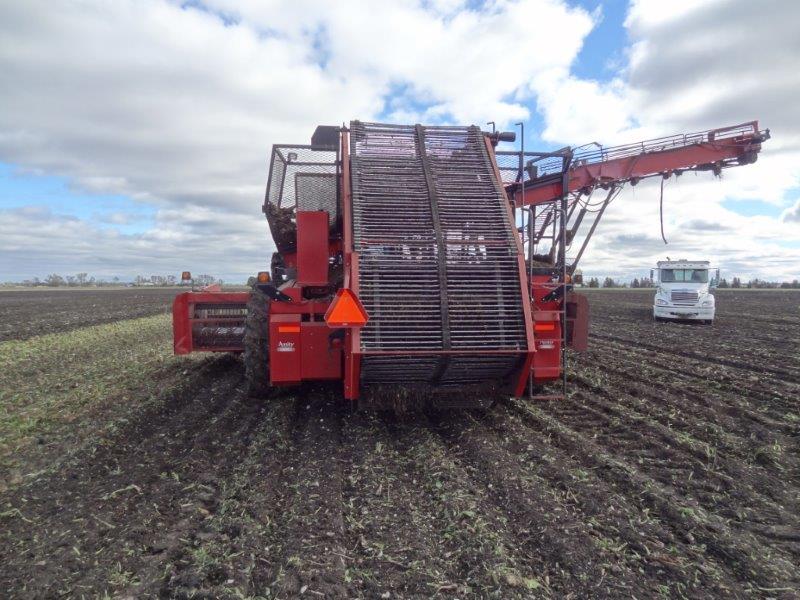
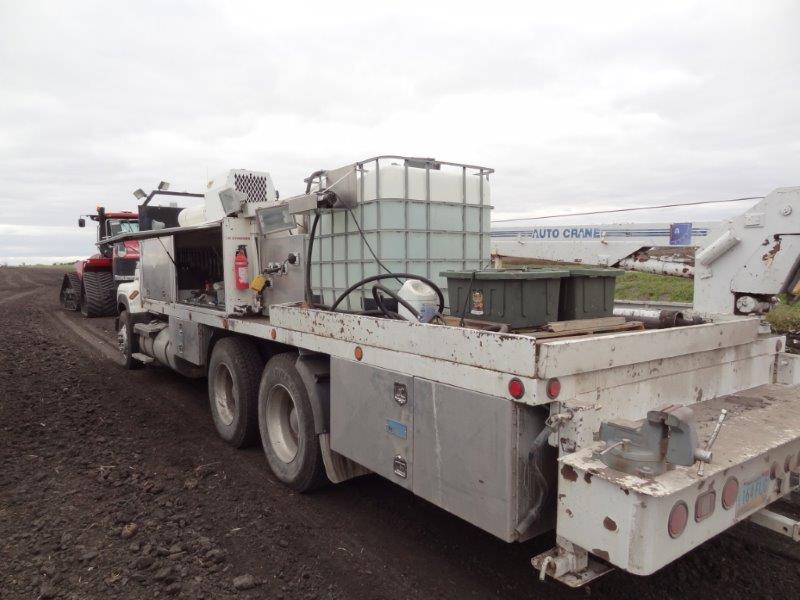
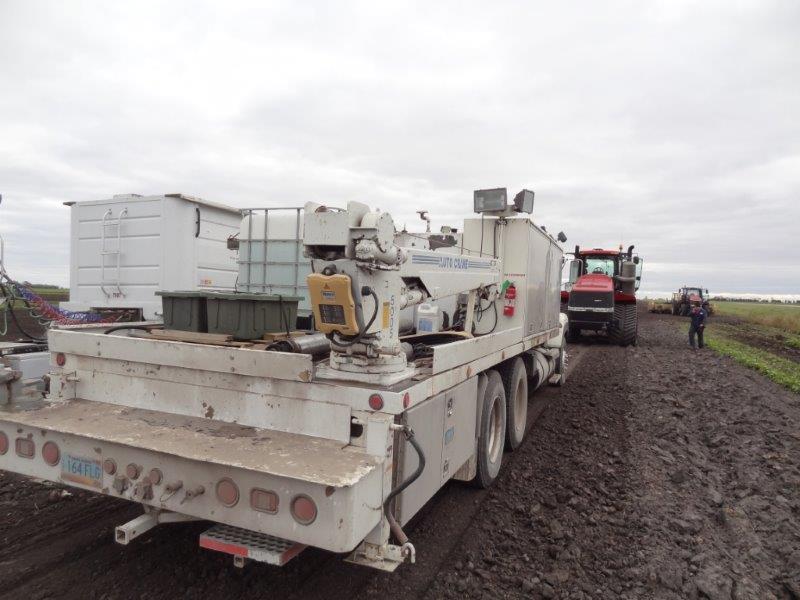

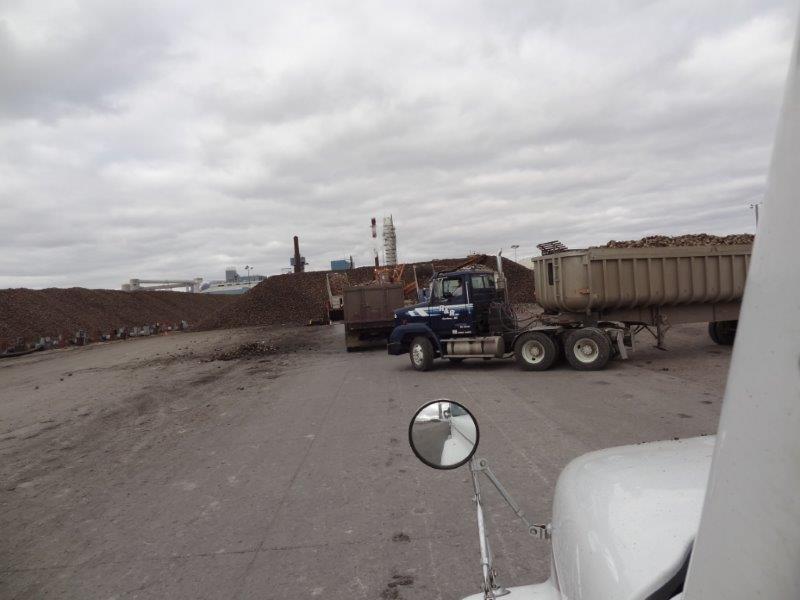
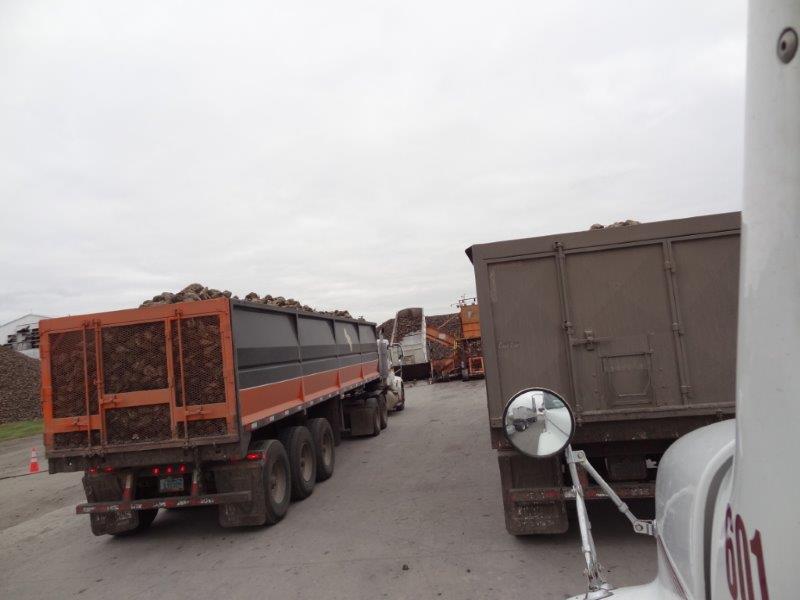
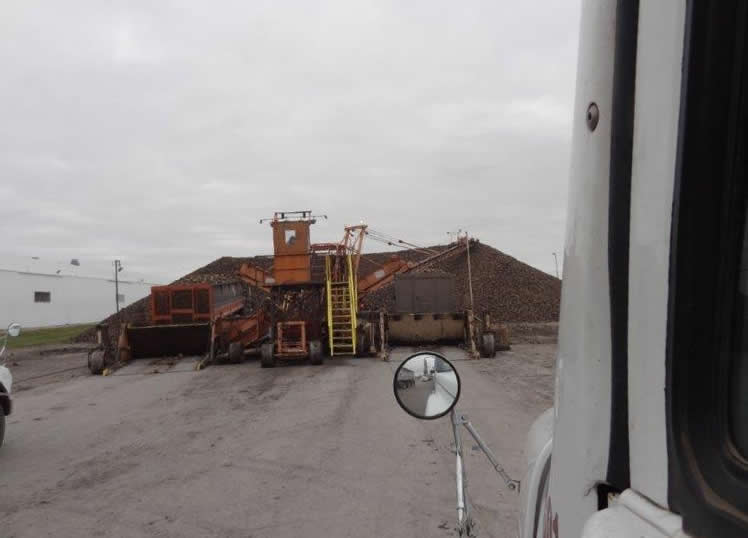
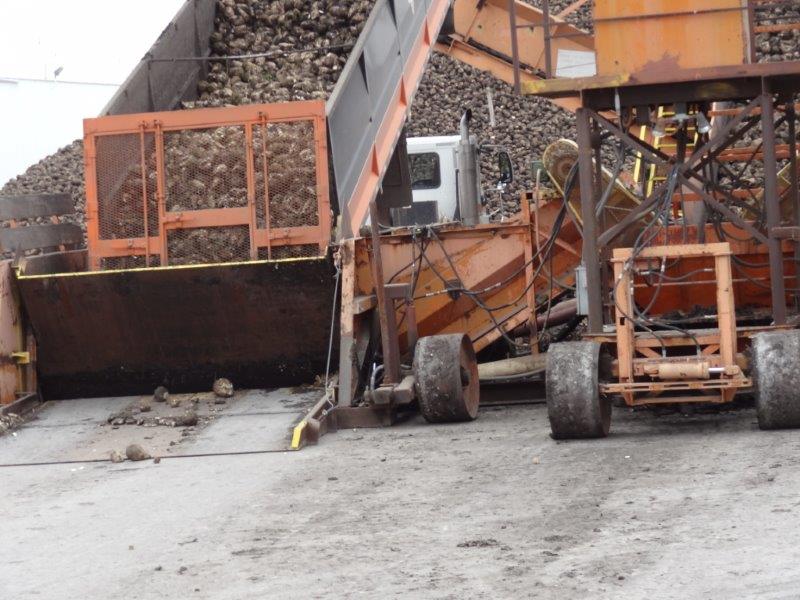
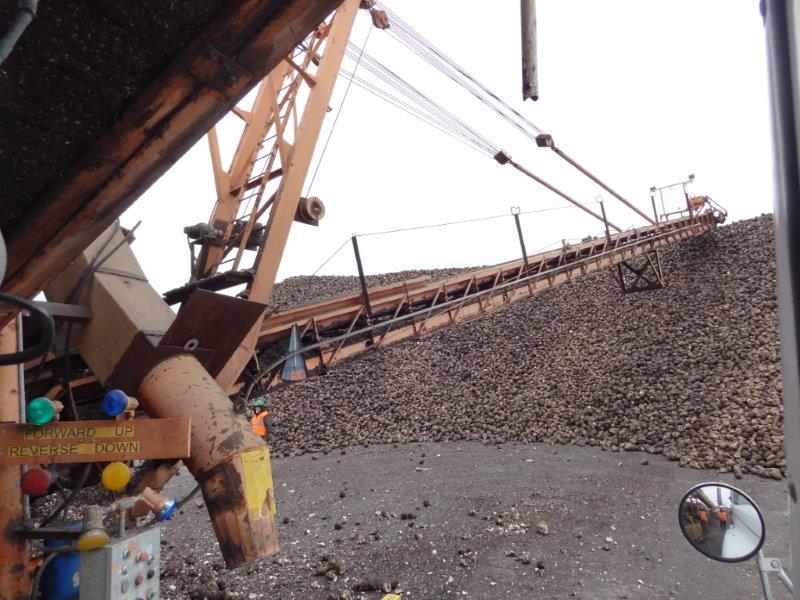


Holy, moly what an operation!!!! What a neat experience for “the boy.” The hours leave a little to be desired. Glad that you have found things to keep busy — not that I doubted you would be sitting around.
Those beets must be pretty well battered by the time they get where they are going. How long can they leave them sit in the pile?: I would think if it warms up, they would go bad pretty quickly.
To keep the beets cool, they put big corrugated pipes (like what they put under driveways at a ditch) inside the piles, all connected together, like a long pipeline. And I think they blow cool air through them. That keeps the beets cool. I’m not sure how long they can leave them piled up.
The sugar beets are pretty tough. I’ve seen lots laying on the sidewalks in town (they bounced off the trucks). They are all intact!